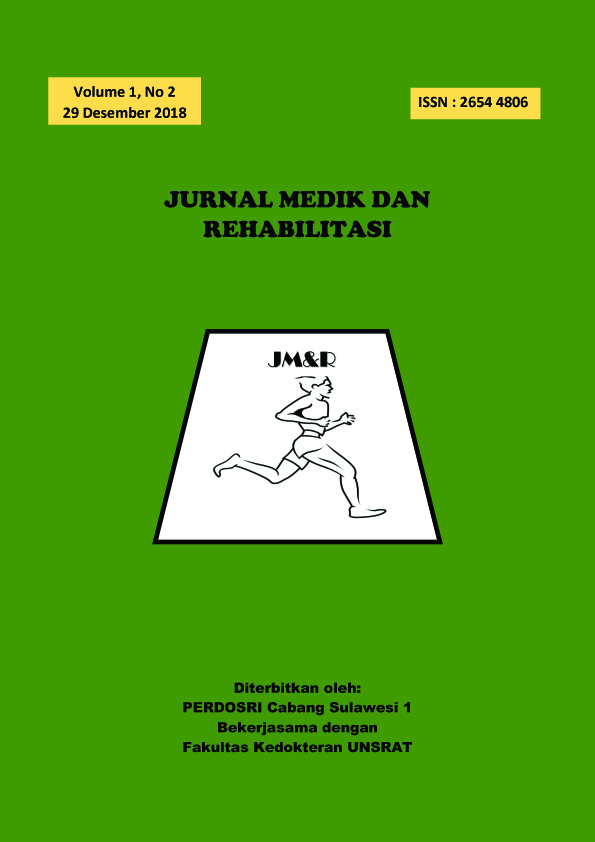HUBUNGAN ANTARA FREKUENSI KONSUMSI BAHAN MAKANAN SUMBER PROTEIN DALAM MAKANAN PENDAMPING AIR SUSU IBU (MP-ASI) DENGAN STATUS GIZI ANAK USIA 12-24 BULAN DI KOTA MANADO
Abstract
The first thousand days of life which starts from the conception until the child reach two year of age is a critical period in determining the health of said child for the rest of his due to this period being the peak of the child growth and development. As a child grows and develops after the first 6 months, breastmilk alone would not be able to sustain all the nutritional needs of the child, therefore requiring complementary feeding for the process of development and fulfilling the nutritional needs. This study aims to determine the correlation between complementary feeding and nutritional status of children aged 12-24 months in Manado. This research is an analytical research utilizing cross-sectional approach in 5 community health centres area of Manado.
The result of this study in 79 sample is obtained through the indicator of weight for age 79,70% children are normal, 15,20% are underweight, 3,80% are severely underweight, and 1,30% child is categorized as overweight. According to the indicator of length for age, 50,60% children are normal, 26,60% are stunted, and 22,80% are severely stunted. The most common plant protein ingredients used in complementary feeding are tofu and tempeh, when the most common plant protein ingredients used in complementary feeding are egg and formula milk.
This study demonstrates there are no correlation between frequency of protein material in complementary feeding consumption and child nutritional status according to weight for age indicator and length for age indicator.
Keyword: Children Nutritional Status, Complementary Feeding, FFQ, Manado, Protein.

